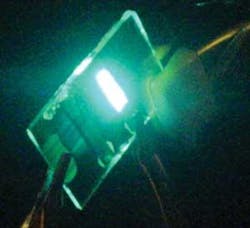CNT thin films show high infrared transparency
Conductive-carbon-nanotube (CNT) thin films—developed as a replacement for more-brittle indium tin oxide materials—have been studied in the visible wavelength range for applications in solar cells, solid-state lighting, and displays. Now, researchers at the University of California, Los Angeles, have studied their properties in the mid- and far-infrared (IR) spectral range, finding that highly conducting CNT thin films show excellent average transmittance for wavelengths up to 22 µm.
To study the CNT thin-film properties, substrates of glass and zinc selenide were used that provide transparency from 200 nm to 22 µm, considering that many of the films are too thin for practical application without a supporting substrate. Analysis of electrical and optical properties of various thin-film types shows also that CNT, graphene, and certain polymer thin films have high work functions and can be used as anodes in optoelectronic devices. The low charge-carrier density of CNT and graphene make them good candidates for longer-wavelength IR applications. But among all the films, CNT thin films have the lowest reflection and highest transmission through 22 µm, meaning that antireflection coatings are not needed and making them excellent candidates to dissipate heat through radiative IR transmission in solar cells, for example. Contact Liangbing Hu at [email protected].
